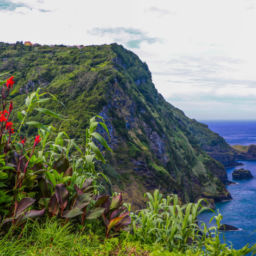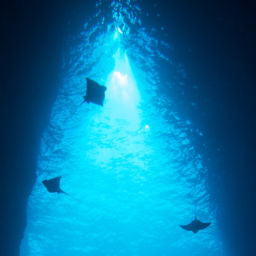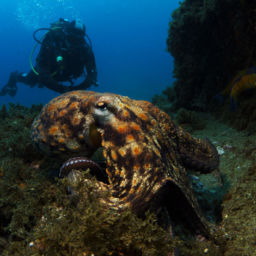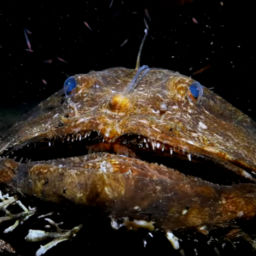This cluster of weather-beaten islands belongs to Portugal, but feels like a world of its own, almost prehistoric in its isolation and raw natural beauty. Scattered like afterthoughts along the spine of the Mid-Atlantic Ridge, the islands are the result of violent tectonic activity, evident today in soaring volcanic peaks that plunge into deep waters. Because the islands are so remote, and because of their unique position at the confluence of several nutrient-rich ocean currents, the diversity of marine flora and fauna found in the waters of the Azores is quite astonishing. More than 20 species of whale and dolphin inhabit the archipelago, and the area has earned a reputation as one of the best places in the world to see sperm whales in their natural environment. Pelagic species including blue and mako sharks are also common in season. Best of all, the Azores frequently boast incredible visibility due to strong ocean currents and a lack of pollution from the mainland.
One dive site in the Azores has earned an international reputation for excellence, and attracts professional photographers year after year: Princess Alice Bank. This seamount soars from a depth of over 3,300 feet to a peak just within reach of recreational divers. With a minimum depth of 104 feet, as well as the potential for strong currents, Princess Alice Bank is only suitable for experienced divers with an advanced qualification or higher. It is imperative that divers here are able to control their buoyancy and hover in the blue, while keeping a constant eye on their depth and time. However, as is often the case where risk is involved, Princess Alice is well worth the difficulties it presents. Great nutrient upwellings create magnificent pelagic action, from sharks to game fish to seasonal schools of graceful mobula rays. When I visited, the trip from Pico to Princess Alice took almost three hours by boat, but the voyage is far from monotonous. The bow of the inflatable sent up great crests of foaming spray as we sped towards our destination, the droplets transformed by the sunshine into cascades of scattered diamonds. A pod of common dolphins joined us, their sleek bodies leaping from the waves one after another until we too felt their joyful celebration of life on the high seas.
When we finally arrived at Princess Alice, there was nothing to mark the spot, no indication that one of the most productive and contested fishing grounds in the North Atlantic lay directly beneath our boat. The water was amazingly clear, and even from the surface we could see the shoals of mobula rays for which the seamount is so famous. A shot line was dropped, and we were soon clinging to it, as we became front-row spectators to the mobulas’ ballet. There were over a dozen of them lazily circling the submerged peak below us, the sun’s rays dappling their golden backs with intricate, shifting patterns of light and shadow. The ocean fell away into an abyss, from which the sunbeams appeared to be reflected back towards us. The mobulas were a silent squadron moving through the water, a perfectly choreographed dance of synchronized wingtips in seemingly effortless flight. We held onto the line and simply watched them for some time before eventually continuing our descent towards the seamount’s summit. Droves of undulating triggerfish and a shoal of barracuda appeared, moving together like a silver whirlpool stuck in slow motion. We didn’t have much time at 104 feet, just enough to come face-to-face with a giant stingray, and to marvel at the mobulas still circling above us, now silhouetted against the brilliance of the sun. At depth, the ocean was more violet than blue, and when it was time to ascend it was like moving backwards through the color spectrum towards the light.
For more information: http://www.cwazores.com/princessalice.aspx





